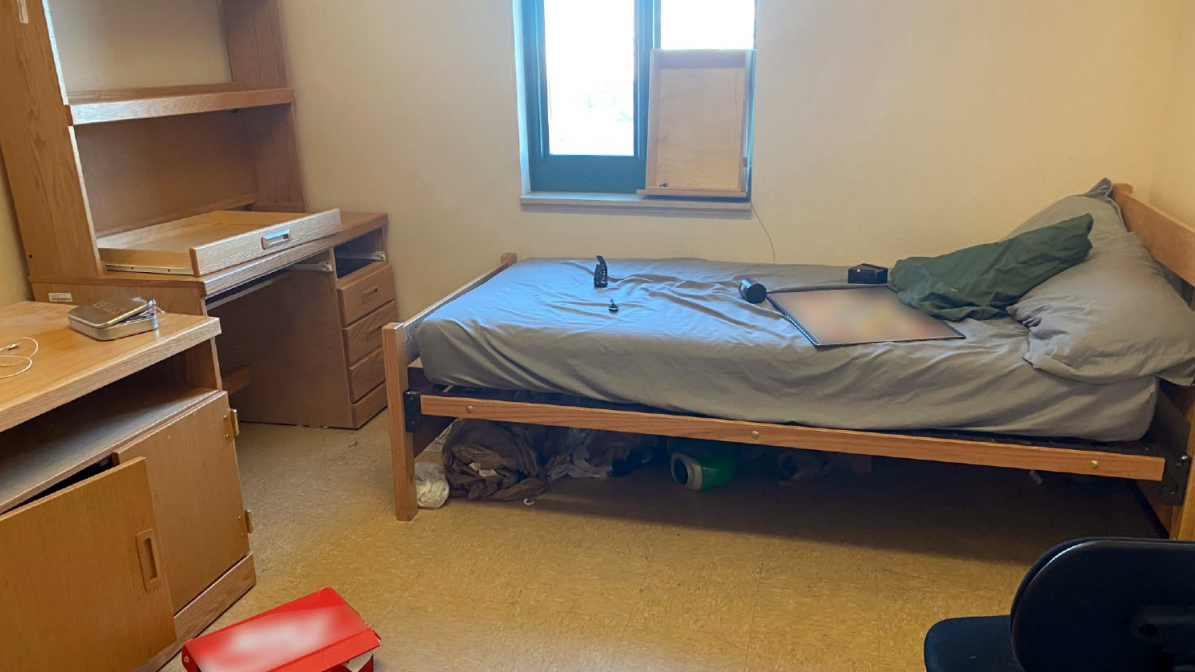GAO Report Urges Action to Improve Barracks
GAO Report Urges Action to Improve Barracks

Poor barracks living conditions are undermining troops’ quality of life and readiness, a new report by the Government Accountability Office found.
“Military barracks house hundreds of thousands of service members on U.S. military installations globally, and living conditions in these facilities can have significant effects on barracks residents’ quality of life and readiness,” the report says. The military manages nearly 9,000 barracks worldwide, and “services face a number of challenges, including aging infrastructure and competition with other mission-essential facilities for maintenance and construction funding.”
The GAO report published Sept. 19 analyzed 10 military installations, including two Army posts, Fort Meade, Maryland, and Fort Carson, Colorado, between February 2022 and September 2023. Its findings are based on a performance audit and 12 focus groups with service members in a variety of on- and off-post housing situations.
Military housing, including barracks, is a top quality of life priority for Army leaders, with the service investing about $1 billion annually in barracks improvements. “We want to make sure that our soldiers have a good quality of life,” Army Secretary Chistine Wormuth said during a recent visit to Fort Riley, Kansas. “I think I know the moms and dads and grandparents around the country are going to be a lot more supportive of their sons and daughters joining the Army if they know that they’re going to have good places to live.”
However, the effort takes time, particularly because of the scope of the issue. The Army is “the military service with the largest inventory of barracks,” according to the GAO report. Typically, single or unaccompanied soldiers in the ranks of private through sergeant are required to live in the barracks when they are based in the U.S.
Though some soldiers, such as at Fort Meade, have access to privatized barracks that meet or exceed DoD standards, soldiers in government-owned barracks are left to fend for themselves in “substandard” conditions, the report says. “In recent years, there have been reports of barracks being abruptly closed after detection of problems like mold, pests, and broken air conditioning,” the report found.
At an installation in the Washington, D.C., area, a barracks had a condition score of 86 out of 100, but 25% of its rooms had broken air conditioning, the report found. Service members described working outside on hot days and coming back to the barracks as “continuous misery,” the report says.
Service members in six of 12 discussion groups reported “issues with pests, including bedbugs, rodents, cockroaches and wasps,” and half of the installations that the GAO toured had mold or mildew growth in barracks rooms, according to the report.
The GAO also found that DoD assessments of barracks conditions are not always reliable, and the department does not track information on barracks conditions. Another issue was insufficient funding information and oversight, according to the report.
Along with the Navy, “the Army … [does] not provide guidance to installation maintenance offices on what expertise is required,” and officials at one of the Army installations studied told the GAO that “personnel without appropriate expertise are conducting barracks condition assessments, resulting in unreliable condition scores,” the report says.
The condition of some barracks left troops with negative physical and mental health effects, according to a 2022 Army survey cited in the report. Soldiers reported “poor sleep quality” and “feeling trapped, lonely, or depressed,” the report says. Some raised safety concerns, “including the lack of security cameras and incidents of sexual assault,” the GAO found.
On an interpersonal level, a 2022 Army study cited in the report found that sharing a bedroom had negative implications. “Installations with a low proportion of private rooms had increased rates of serious arguments, bullying, and low unit cohesion,” the report found.
Additionally, DoD does not know how much of its facility sustainment budget goes toward barracks. The Army, Navy and Marine Corps were able to provide the GAO some funding information, but “only on Facility Sustainment Restoration and Modernization barracks projects funded at the headquarters level, not at the installation level because, according to officials, these services do not track installation Facility Sustainment Restoration and Modernization projects,” the report says.
Even when funding is available, officials at one Army installation reported feeling discouraged from submitting barracks projects for consideration. “Officials told us they need barracks [military construction] projects to improve quality of life for service members, but would not submit these projects for consideration because the Army only approves barracks projects connected to a new mission, such as when a new tenant arrives at the installation and requires housing for enlisted service members,” the report says.
The GAO report recommends updating the minimum standards for barracks. It also urged better access to all barracks construction requirements at the installation level, among other recommendations.
“By addressing these issues, the Office of the Secretary of Defense and the services will be more aware of the effects of living conditions in barracks on quality of life and readiness, and will be better positioned to make improvements for the thousands of service members required to live in those facilities,” the report says.
The report is available here.

